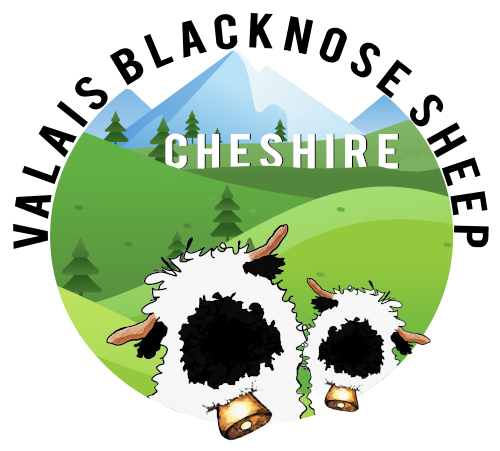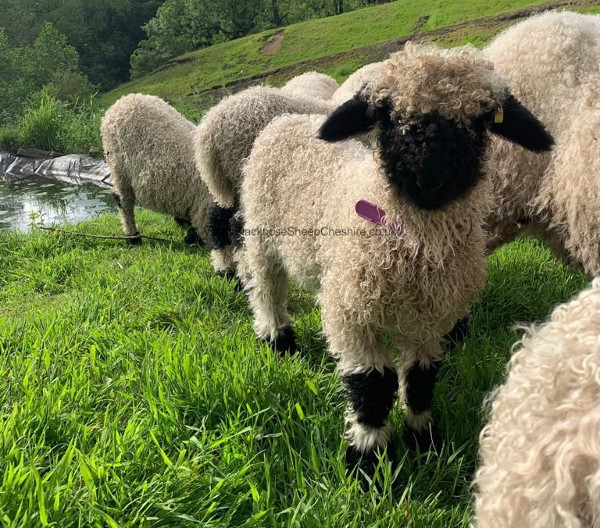
One of the most prized livestock in Cheshire and the whole UK is the Valais Blacknose sheep. After being highlighted on BBC’s Countryfile in 2012, they immediately caught the public’s attention due to their cute looks. The internet was taken by storm, as most people could not believe that these animals were real. They are the new favourites of livestock keepers in Cheshire. If you would like to learn more about our Valais Blacknose Sheep for sale UK, please follow this link.
One of the most prized livestock in Cheshire and the whole UK is the Valais Blacknose sheep. After being highlighted on BBC’s Countryfile in 2012, they immediately caught the public’s attention due to their cute looks. The internet was taken by storm, as most people could not believe that these animals were real. They are the new favourites of livestock keepers in Cheshire. If you would like to learn more about our Valais Blacknose Sheep for sale UK, please follow this link.
According to Hans Hinrich Sambraus, first mentions of the race can be traced back to the fifteenth century. However, it’s possible the current Blacknose sheep are descendants of a breed introduced to Valais already in pre-Roman times. Named Ovis aries studeri, the skeletal remains of those progenitors were discovered in 1882 by Studer and described in detail by Duerst. It would appear that in the closed environment of Alpine valleys the breed remained largely unchanged.
Proof against harsh environment, the Blacknose sheep more than once became endangered by human activity. In 1884, trying to improve upon the wool and meat output, the authorities of Valais decided to start a programme of crossing the breed with Australian Southdown sheep. Luckily for the native race, the descendants proved to be less adaptable to the climate, their wool much harder to spun, their meat less desirable due to high fat content. 1930s saw the Valais Blacknose once again in jeopardy. State agencies and agricultural associations, striving to establish uniformed breeding of a standardised white mountain sheep, a race best meeting the needs of the changing market, took efforts to eject other traditional breeds. In order to do so, it was decreed that the old races would no longer be licensed and their herd books would cease to be recognised. On top of that, throughout 1930s and 1940s bouts of tuberculosis and brucellosis decimated the Blacknose population. The liberalisation of regulations in 1960s brought a welcome change to the situation of Valais sheep. Their meat returned to the market and in 1962 they were officialy recognised as a breed. In 1964 they were admitted into the Swiss Sheep Breeding Association. Finally, in February 2014, first Blacknose sheep arrived in Great Britain. They managed to adapt well and in April that year first lambs were born.
Long history and tradition are one thing, but the Valais Blacknose sheep are special for other reasons, too. Their small black faces combined with soft white fleece earned them the reputation of ‘cutest sheep in the world’, with many doubting on first seeing them whether they’re actually real and not woolen mascots. Accustomed to harsh mountain environment, the sheep are strong and easily adaptable animals. Moreover, their size and robust physique make them particularly good for meat, while their wool is considered perfect for carpets and felting.
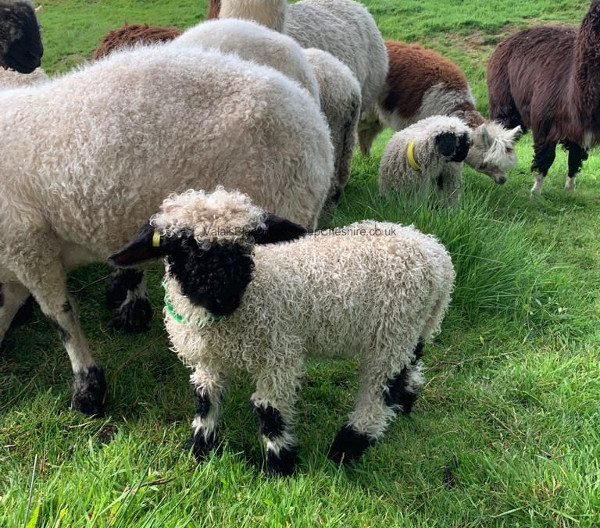
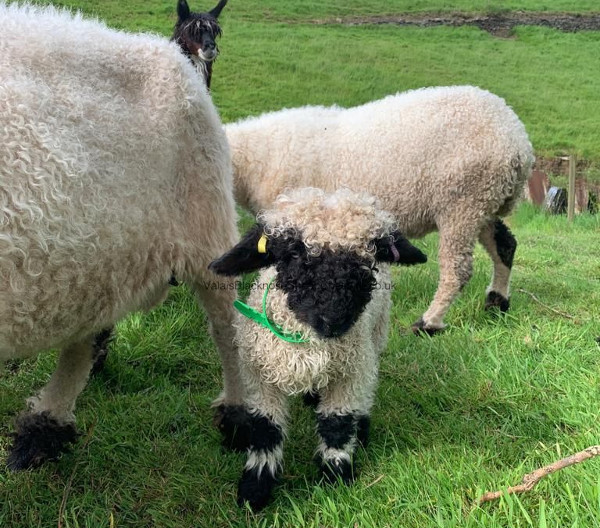
The Valais sheep have short heads with broad forhead and wide mouth. From the centrally located black nose which gave the breed its name the colour spreads evenly throughout the face, to the black-rimmed eyes and medium-size black ears. Characteristic black spots can also be observed on the ankles and front legs knees. Females can also boast tail patches, which however are not to be tolerated in males. The horns spiral horizontally and black streaks may occasionally appear on their surface. The neck is short and well muscled. The back is long and straight, extending smoothly into wide loin. The shoulders are close-fitting, the chest broad. The whole body is strong and well muscled, with solid bone structure. The legs are straight (with slight angulation of ankles) and relatively short, the front ones set wider apart. There’s no trace of knock knees or bow legs. The sheep’s walk is sure-footed, as befitting a mountain race, with no hint of wavering. Counter to their cute appearance, the Valais Blacknose sheep are by no means small animals. The withers height of the breed achieved by the age of two years can vary from 72 to 78 cm (28 to 31 inches) for females and from 75 to 83 cm (29,5 to 33 inches) for males. The weight goes from 70 to 90 kg (154 to 198 Ibs) for females and from 80 to 125 kg (176 to 176 Ibs) for males. As already mentioned, wool is one of the main assets of the Valais Blacknose sheep. On average the fleece grows about 30 cm (12 inches) a year. However, it is rarely allowed to reach that length: the shearing is performed twice a year, resulting in 12,5 to 15 cm (5 to 6 inches) long staples. The fleece is balanced and grows all over the body, including head and legs. It should be uniformly white, with aforementioned black spots. Occasional black hair on the neck might be tolerated. Excessive twisting of the wool may be ground for exclusion from the breed. Likewise, mixed colours in animals above the age of 18 months are likely to be frowned upon.
Increasingly protected by humans, the Valais Blacknose sheep may nonethless once again find themselves endangered- this time by the nature. There have been reports that the return of the wolves to Switzerland is becoming a threat to the already rare breed. It is estimated that there are only a few thousand sheep of that race in the world, most of them in their native Switzerland, with occasional flocks in Germany. The British population only amounts to a few hundred animals. Local breeders are largely cosociated in Valais Blacknose Sheep Society UK. However, one doesn’t have to be an actual breeder to find themselves closely associated with those cute sheep.
We are thrilled to be one of the lucky few to now own some in Cheshire. Acknowledged widely as the cutest sheep breed in existence, Valais Blacknose sheep are famous for their shaggy coats and spiral horns – which are found in both sexes. The most interesting feature of Valais Blacknose sheep, however, is its face. The black patches on its nose, eyes, and ears make them quite unmistakable. In addition to its face, black spots are found on the Valais Blacknose’s knees, hocks and feet. Valais Blacknose is a Heritage breed and well-suited to the extreme weather conditions of the Valais alpine pastures. In Switzerland, they spend the summer months high up in the mountains and come down off the hill for the winter.
Since their official recognition as a separate breed, their number is on the rise. In 1983, there were only 9940 Valais Blacknose, but by the end of 2013, there were over 17,000. This is good news for the conservation community, considering that the reproduction rate for a single ewe is 1.6 lambs per year. In their homeland, however, only a few thousand remain, with numbers being threatened further by the reintroduction of the wolf. They have become residents of the United Kingdom in 2014. Back in February a couple from the United Kingdom imported a small flock at their farm in Cornell. In April they celebrated having the first Valais Blacknose lamb born in the UK.
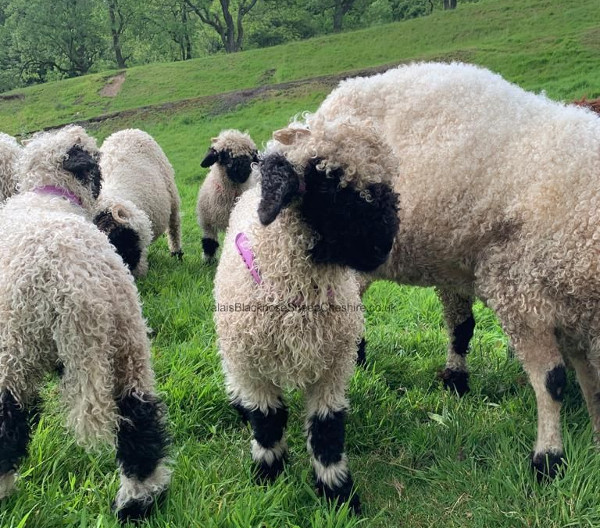
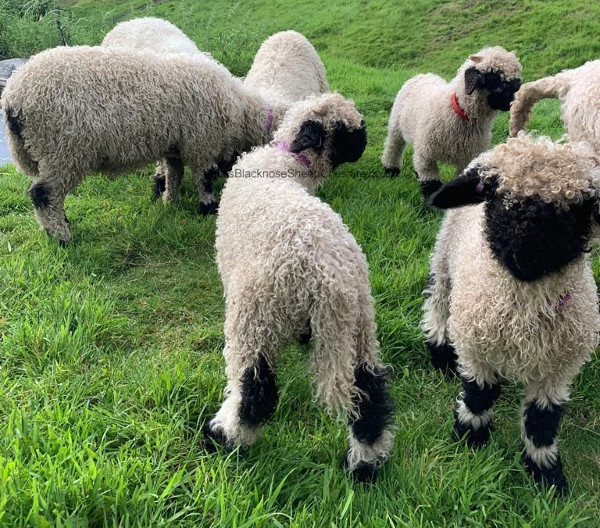
Highly domesticated, the Valais Blacknose sheep do not shy away from contact with humans. As a result, many residents of Upper Valais have started keeping them as pets in recent years. They have placid natures and are easily tamed which, combined with their striking appearance, make Valais Blacknose the perfect pet sheep. The Valais Blacknose has a thick coat of coarse white-coloured wool. The wool covers the whole body evenly. Their wool falls into the vast and uninformative industrial category of “carpet wools.” Carpet wools require spinners, knitters and other crafters to use creative ways to craft textiles. The Valais Blacknose has a robust and large-framed physique. Each sheep weighs 80 to 100 kilos and produces about 4 kilos of wool a year. The fleeces vary individually, but they grow 12 inches each year on average with two shearing producing 5-6 inches of staple length. Their wool is white with long staples and a beautiful shine with well-defined locks. The wool of Valais Blacknose is coarse in nature and is used mainly for mattress stuffing and for feting as well as for carpets. The meat obtained from the Valais Blacknose sheep is of excellent quality and is famous for its tender nature. They are also simple to care for, highly intelligent and calm, as well as being easy to bucket train.
It is thought the Valais Blacknose sheep, which belong to the Northern Short Tailed group, are the forefathers of the many coloured breeds that can be found along the trading routes the Norsemen took a thousand years ago. Unlike most breeds of sheep, Valais sheep breed all year round and are not seasonal like the majority of sheep.
Colors Features of Valais Blacknose:
• The nose and the centre face is coloured black.
• The rims of the eyes are also black and are similar to the nose colouring. Both eyes have the same rim colouring.
• The ears are also black.
• Uniform, black spots on the ankle and bumps on the front knees.
• Hooves are black in colour.
• In females a tail spot is desirable but it must not be too large and must be stopped.
• In males no tail patches is tolerated.
• In the absence of any striking outward colour feature, it is very difficult to distinguish the males from the females.
Head and neck features of Valais Blacknose:
• Short, dressed head covered in white wool.
• The Valais Blacknose has a distinctive wide mouth, broad forehead and Roman nose.
• Ears are medium sized and one can be moved independent of the other.
• The males have a distinctive head shape that helps in distinguishing the rams from the ewes.
• The neck is short and well-muscled.
Horns:
• Horns are found in both rams and ewes.
• The horns are well-separated and spiral outward parallel to the jaws.
• Occasional black streaks on the horns are tolerated.
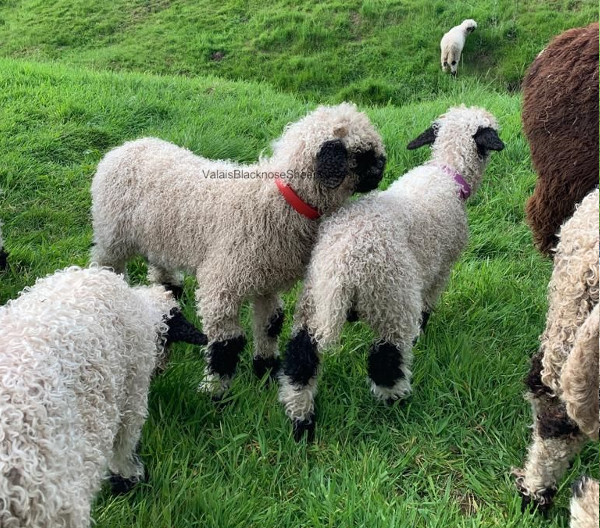
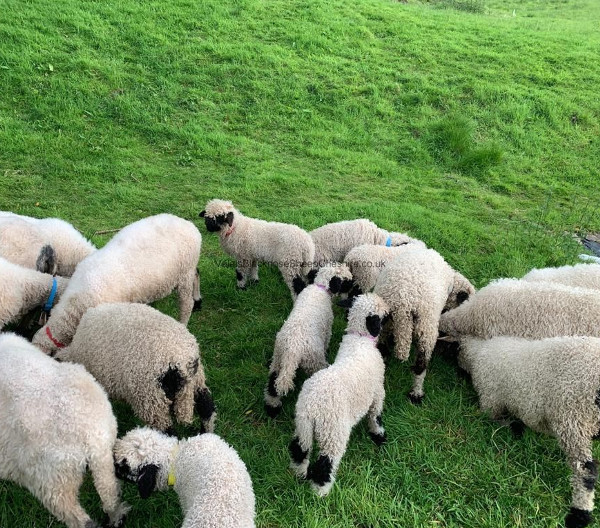
Chest, shoulder, and withers:
• The Valais Blacknose has a wide and deep chest with close-fitting shoulders.
• Withers are broad and closed, giving the Valais Blacknose a stout structure.
• The Valais Blacknose has a good spring of ribs.
Back and loin:
• Long, straight and broad back.
• Wide loin.
Pelvis, abdomen, leg:
• Medium sized belly.
• Mace is well-muscled.
Withers (from two years):
• Female: 72 – 78 cm
• Male: 75 – 83 cm
Weight (from two years):
• Female 70 – 90 kg
• Male: 80 – 125 kg
Limbs:
• Strong and well-placed.
• Not cow-hocked and not bowlegged.
• Wide-legged position of the front legs (not knock-kneed) helps in climbing steep regions.
Foundation:
• Mean ankle angulation.
• Stocky and tough restraints.
• Solid bone structure.
Gang:
• Roomy, sure-footed and legs.
• Not wavering.
Wool:
• Fineness: 5 -4.
• Staple length about 10 cm with semi-annual Schur.
• Balanced and natural all over the body, including the head and legs.
• Uniformly white, the neck may have scattered black hair.
• Well-balanced fleece.
Grounds for exclusion of Valais Blacknose:
1. Anatomy:
• Kiefer: Condensed mandible or unequal jaw length.
• Teeth: If teeth are not up to the gummy plate or fitting (up 18 months in both male and female).
• Permeated shackles.
• Dwarfism.
• Testicular sac rupture.
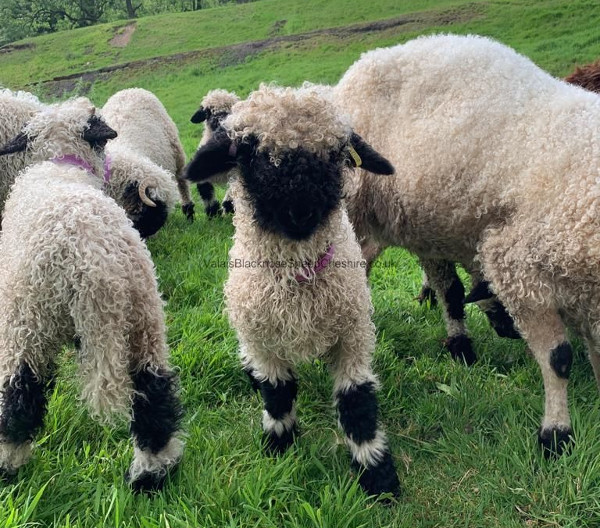
The Valais sheep have short heads with broad forhead and wide mouth
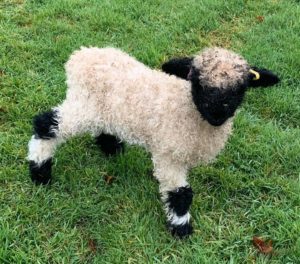
2. Colours Features:
• In males, body spots within the fabric boundary (above the abdominal line), tail spots and the absence of a colour feature.
• Scattered black hairs over the neck in males up to 18 months.
3. Wool:
• Twisting and irregular locks.
• Excessive number of guard hairs.
• Mixed-coloured wool up to the age of 18 months.
4. Swiss Executive Board decision:
• During a transition period, valid for the autumn of 2009 and spring of assessment ratings 2010 SN animals can also be assessed after 18 months in the whole of Switzerland with a score of 1.
• In herdbook animals are processed manually.
• Upon completion of the transition phase, is definitely decided on the basis of the results.
If you are looking to buy Valais Blacknose Sheep in Cheshire, please don’t hesitate to contact us.
